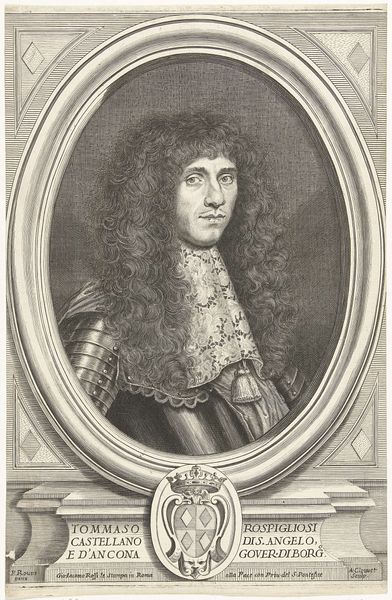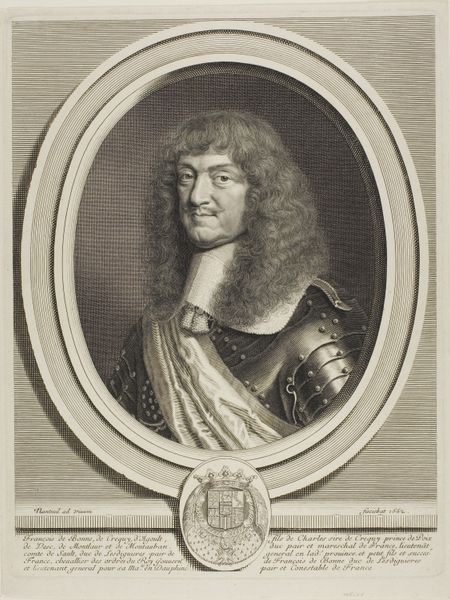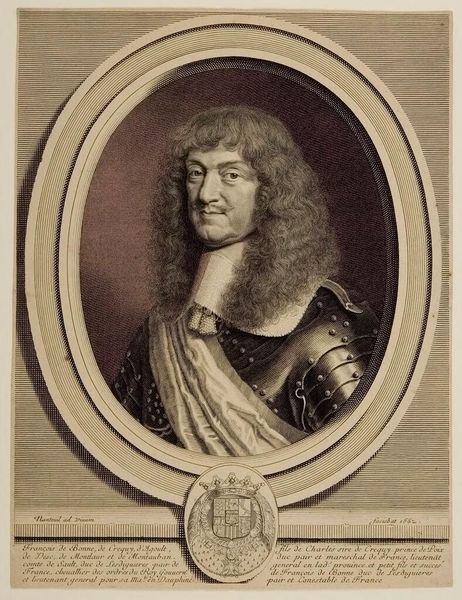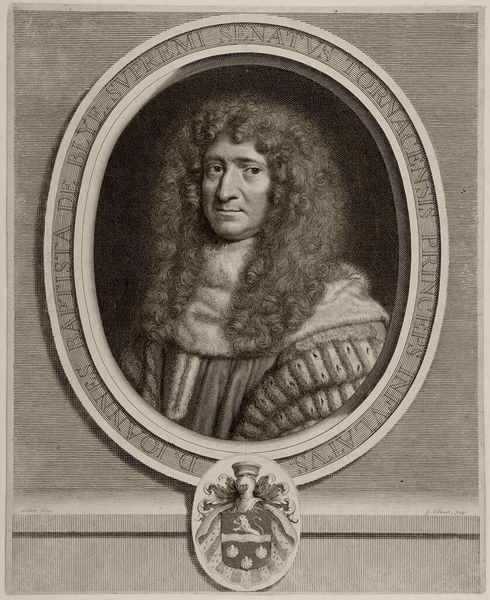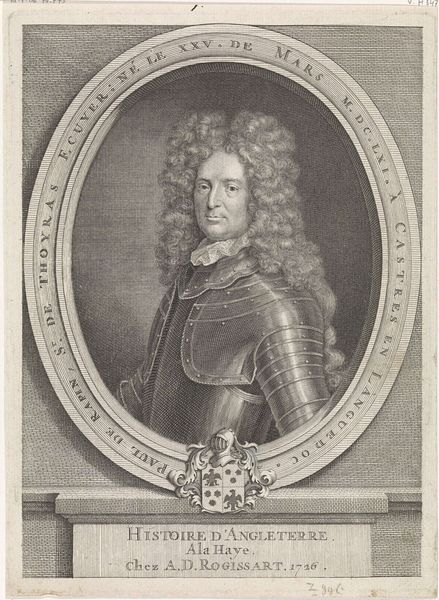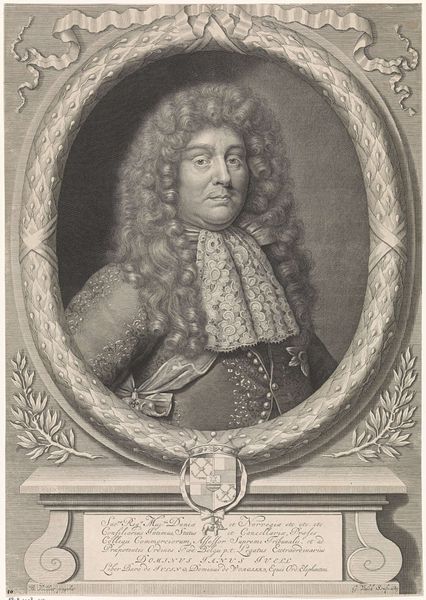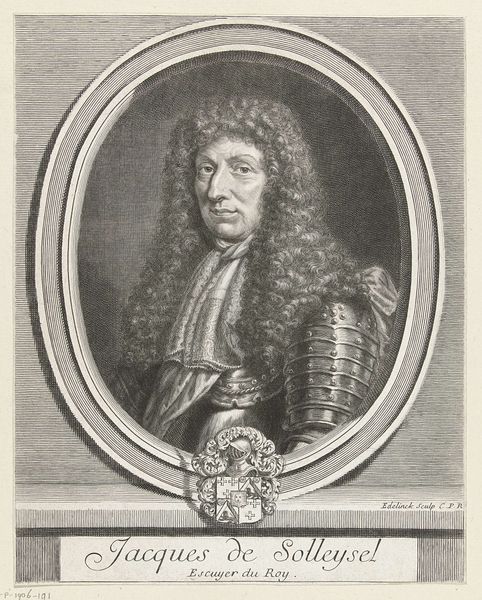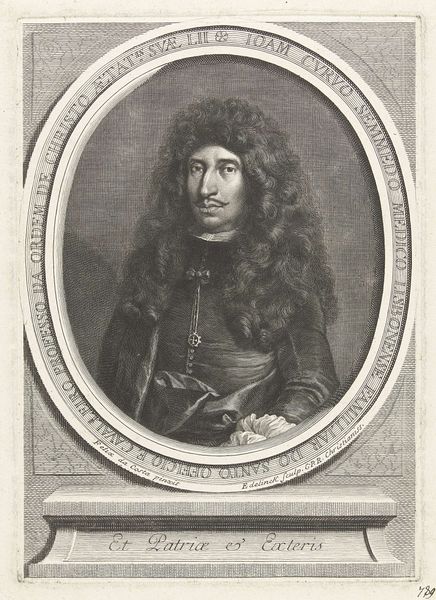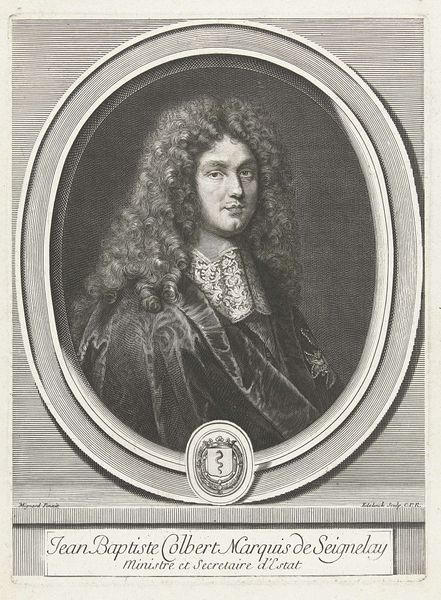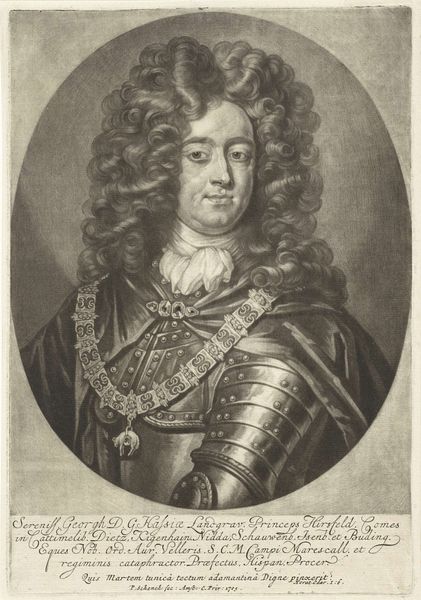
engraving
#
portrait
#
baroque
#
engraving
Dimensions: height 279 mm, width 196 mm
Copyright: Rijks Museum: Open Domain
Curator: Welcome. We’re looking at a 17th-century engraving, "Portret van Vincentio Rospigliosi." It was produced sometime between 1646 and 1679 by Albertus Clouwet. Editor: It strikes me as meticulously detailed, yet strangely melancholic. The fine lines of the engraving lend an almost ethereal quality, softening the armor in a surprising way. Curator: It’s a classic baroque portrait. Notice the elaborate framing, with its decorative elements, like the diamond motifs—perhaps indicative of status. The text below the portrait lends significance as well, pointing to Vincentio's military associations and suggesting some connection to the ecclesiastical state. Editor: The intricate details of his lace collar against the hardness of his armor offer a captivating contrast. Is he being portrayed as both a warrior and a man of sophistication? I wonder how intentional that was. The artist also used different densities of line to build form, light, and shadow. Note, especially, the textural depth in his cascading wig, offset against his somber expression. Curator: Baroque art certainly reveled in contrasting elements. The armor, an immediately recognizable symbol of military power, alludes to protection and strength. But paired with the delicate lace and voluminous wig—signifiers of wealth and refinement—we get a portrait that speaks to the complex societal roles a man like Rospigliosi would occupy. It represents, visually, both strength and privilege, intertwining those notions in a powerful statement about status. Editor: What truly draws me in, however, is Rospigliosi's gaze. He doesn't exude the confident swagger one might expect from a man in armor. Instead, he possesses an air of pensiveness, almost vulnerability. His eyes feel direct, piercing—laden with the weight of history, perhaps? The engraving perfectly captures that interiority, which moves past a surface-level depiction of wealth or social standing. Curator: A worthwhile point. The artist truly seems to capture something more than just social posturing, something universally, enduringly human. Editor: Indeed. I initially perceived melancholy, but, perhaps, now I'd refine it to quiet contemplation in the face of power. Curator: I find that reflection particularly insightful after looking more deeply.
Comments
No comments
Be the first to comment and join the conversation on the ultimate creative platform.
